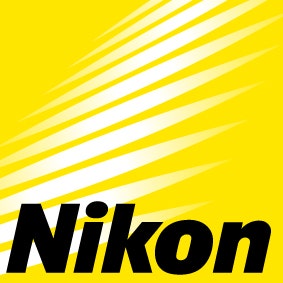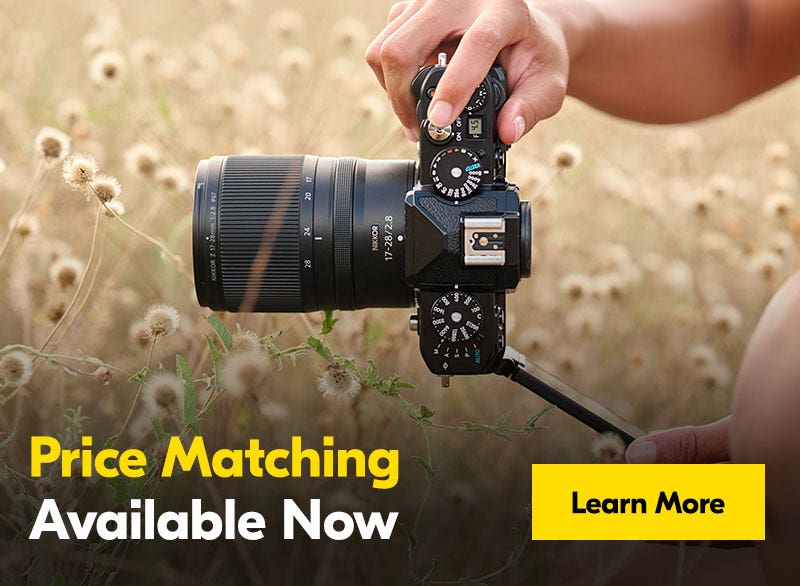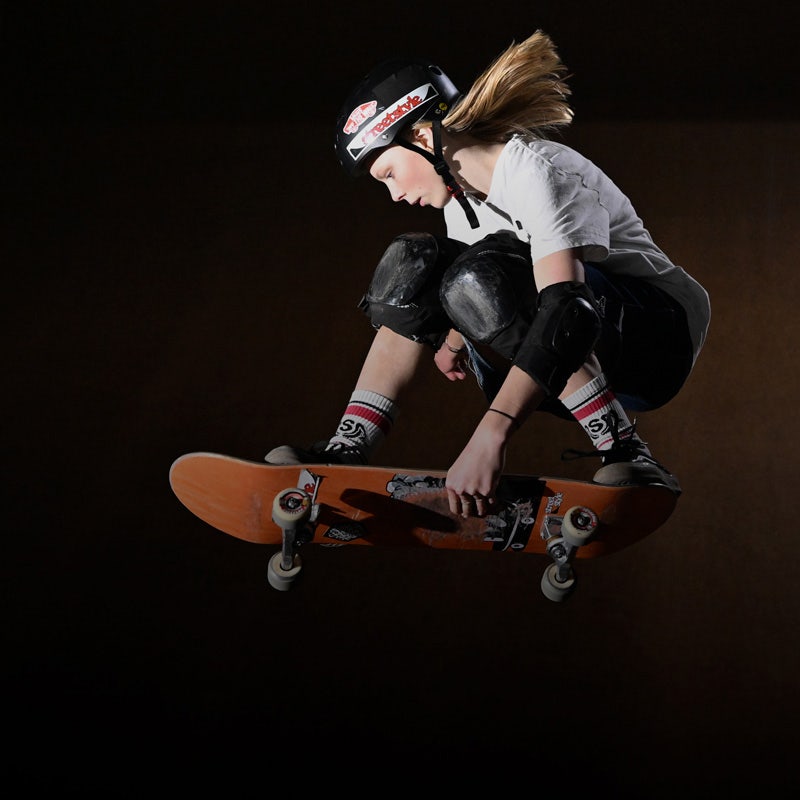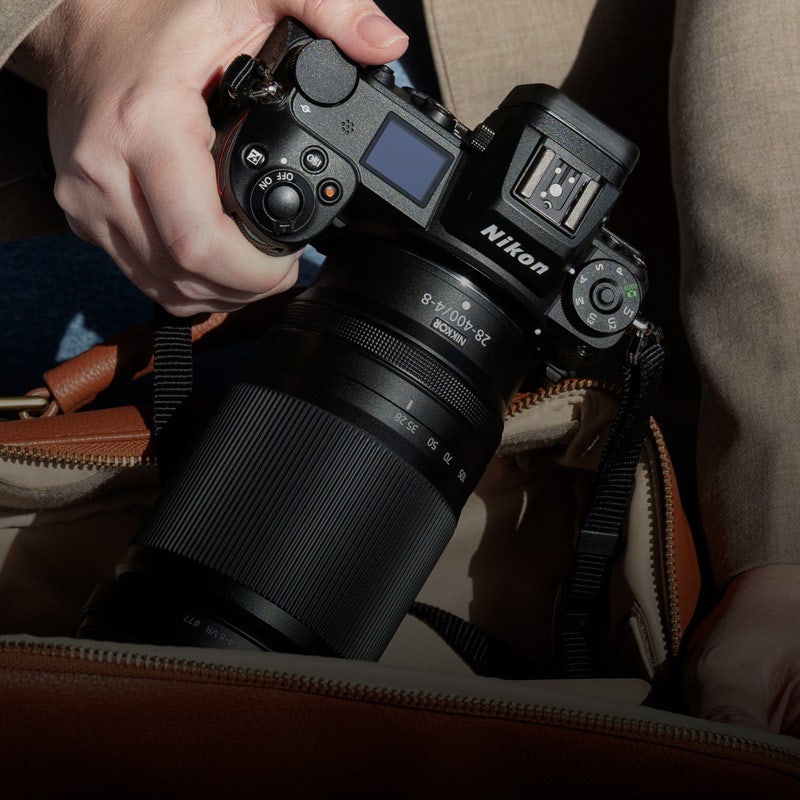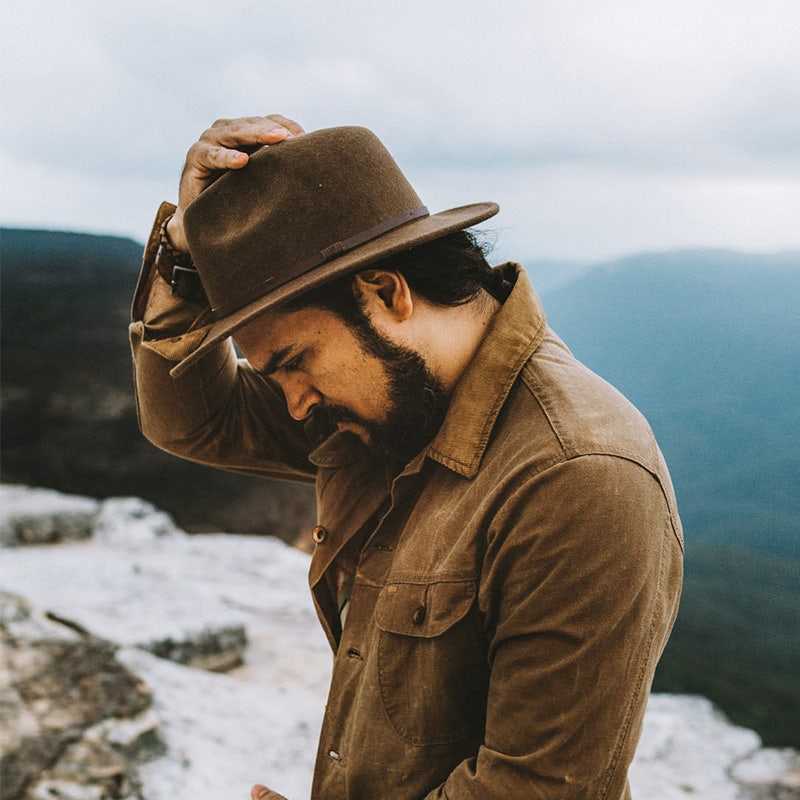Michelle Grace Hunder – Forever Facing the Music
Michelle Grace Hunder is back, which is good for photography, and good for music.


In early 2021, we sat down with Melbourne-based photographer Michelle Grace Hunder to chat about her many endeavours in and around the music world. We discussed her book, her ongoing collaboration with Ruel, her documentary, creative scrambling during the pandemic, and of course, photography in general. For a primer on Michelle and to check out the convo, head here.
Now, she's back. With a fresh mix of topics to discuss.
While talking to Michelle, even over video link, it's obvious that she’s a deeply considered and self-aware artist. She broaches topics with equal parts honesty and even-handedness, and her inherent creativity shines through her words and gestures; through what she does and doesn’t say. Her love of hip hop, passion for female empowerment, and human connection to…well…human connection, is always on full display.
Here's the first of what we hope are many conversational sequels with a fascinating talent. Enjoy!
Let’s get the most important question out of the way first. Did you go see Kendrick Lamar and if so, did you enjoy it?
[Palm to face in disbelief] It literally changed my life [laughs], so...
I actually just watched the live recording he did in Paris, it’s on Amazon Prime, and I relived the whole experience.
First time seeing him live?
No, like... sixth. I’ve shot him three or four times. Did I show you my Kendrick Lamar wall last time?
[Michelle swivels her device to reveal a huge print of a live concert photo she had taken of Kendrick Lamar, see image below].




No, you did not. Wow, that is cool. So, pardon my ignorance, but in a situation like that with Kendrick, are you just put in a position of prominence and asked to take the photo? Or do you have any prior communication with the talent?
It depends on the situation. In this particular situation, no. I was shooting for a publication, which I don’t do very often. When an international artist comes, if there's no direct link to shoot for them then the only other option is to shoot for a publication. So, all the times I’ve shot Kendrick has been for a publication.
I mostly try to work the artist direct, but it’s very difficult with, um, artists that big! And it’s almost impossible to get to him. A friend of mine in the US shot like, one show of his and they’ve used those photos for everything. It's all very controlled. Which is kind of what's happening with bigger artists more and more now.
Your 2022 Splendour in the Grass portraiture/light-painting photos were featured in Rolling Stone this year - I’m really interested in the process of creating that collection, from conception to logistics to production to post production.
Rolling Stone had approached me to do artist's portraits, which I’d wanted to do at festivals for years, but they’re always done in a similar way because they’re limited in space and time.
I said to them: “crazy idea, but what if we did this? I think it would have a lot impact at a festival, it’s really different”. But at the time I had just started light painting, so it was extremely ambitious to pitch this idea. I showed them some examples and they loved it and said “let’s do this”.
So then, I had to literally train for six months to get good enough to be able to do the portraits in the space and time allocated. Because, you basically have five minutes. You get one or two goes at it, essentially.
When I first started, it was taking me over an hour to get anything usable. It's extremely technical and difficult. I was getting used to the brushes and the tools and how the exposures work. From a technical point of view, it’s one long exposure, the room is pitch black and then I have to light the subject using different tools and brushes to make what you see in camera-
Sorry, not to cut you off…but when you say brushes, you mean like, paint brushes?
They’re... they’re called light-painting brushes. Do you remember those fibre-optic lamps from the 80s? That's essentially what they look like. They’re these fine bristles with tiny little dots on the end and you put a torch in the bottom and then they light up… and you can change the colours… that’s what makes the shapes that you see.
There are other tools too. There's one that looks like a lightsabre, it’s like a big wand. There are all these different tools that you can use. So, it was a matter of figuring out how each of them translates to image, how much time you need for each. It’s extremely technical.
I was doing all these sessions in my studio to get better, as I really sucked at it at first.


So, a light trail is formed in the moment by you moving the tools around in the frame?
Yeah! So, an artist would come into the tent and I would say “just bear with me”, because you have to explain really quickly. And they have to be really still. It’s the opposite of any other photoshoot they would do. It’s like “you need to hold a pose for a minute while I do all this [moves her arms around wildly] around you” [laughs].
Well, that was my next question, was the talent aware of the process beforehand?
I briefed them really quickly. I was like “we’re going to do a light painting, it’s going to take a minute, just be really still”. And then I would show them the result and they’d be “oh my god, how did that happen out of pitch black?”. So, if you had to have another go, they’d get what you were doing right away.
They turned out really well.
They did. I was extremely proud of myself [laughs]. It was hit or miss, if that was going to work. Even when I got there, I wasn’t sure if it was going to be dark enough. I had my husband help me set up the day before during torrential rain. The whole thing was very difficult logistically.
So, since this shoot, light painting has become more of a thing for you, has it?
Yeah, I mean now it gets requested. I just shot my first single cover with light painting, they requested it. People just request it all the time, which is really cool.
I’m actually just about to do a big day in my studio where I’ve got a bunch of different painting tools and ten people rolling through, and I’m just going to practice. I’m hoping to make some new discoveries there, which will be fun.
When you’re in the process of doing this fancy, technical light painting, is it hard to also remain focused on the actual posing or expression of the talent?
It’s interesting [thinks]. They don’t really have to overthink it, so it’s actually kind of a lot easier than normal portrait photography because you just have to ask them to hold a pose and their expressions have always been totally fine. The main thing is, if they move, then it’s weird. Stillness is also the most important thing.
Sometimes, if they don’t like their expression after seeing the result and ask for another go, they’ll strike a pose that’s bolder or something. The artist thinking that they can elevate the result is kind of part of the process too.
Much post-production in those photos?
Hardly any, which is what I love about it.
I just boost the colours and make sure the blacks are really black. It’s the quickest thing ever. It takes like five seconds.


A bit of internet sleuthing reveals that just yesterday, you were credited with some lovely images of the Moulin Rouge stage production.
I totally forgot about that. I did Moulin Rouge and Harry Potter within a couple of months of each other. For Moulin Rouge, it was a big contract, where I had over four days to get all the production stills and the stuff for the program. Which was such an amazing experience.
I hadn’t done musical theatre before and it’s obviously extremely similar to live music. But the difference with the Moulin Rouge job was that you get to keep going. You get to shoot one run of the show and then you do another run and then you come back the next day – you keep getting another chance. You see it again, see different moments.
And then for the program – we had to replicate an international version. So, they showed me photos that we had to identically replicate. That was really interesting. We had a day of setups where there was a choreographer, a lighting tech and the director. And everyone was there directing the shot to get it exactly like the one that was in the overseas program.
Dancers could hold poses. You had a bit more time to get the shot. Everyone was very much on board to get the shot. There was a whole room of people working to make it happen. It was different to anything I’ve done before. I loved it.
I was very nervous going in but everyone was really stoked with the results.


Since we last spoke, you’ve been refining your focus and doing what you love to do the most. Over the past year, what would you say would be at the top of that list?
I would say, going back to working with Ruel again. I’ve been working for him forever. His first official album’s coming out early next year, so, we’ve just done all of the content for that. Big, big days of shooting. Album cover, press shots, videos, all the things that go along with releasing a debut.
Hopefully this will mean going back to touring with him next year. That’s the stuff that I love the most, working with that team. It’s been great to do a bunch of new stuff with him.
Ruel is featured on your homepage, yes? The shot on the balcony?
It is.


Not that I know what I’m talking about, but that’s a beautiful photo.
That shot… we were on tour and stopped in the middle of nowhere. We were in Idaho or something. There was this really cool motel with a cool balcony. He got off the bus and I was like: “I reckon we should just do a shoot over here”. He happened to have a couple of cool outfits and he just chucked one on. I got some beauuuutiful shots that day. Some of my favourite shots of him. That one’s always stood out to me.
It’s very cinematic, and kinda European. I like it a lot.
That’s cool. Love that.
With the ‘content creation’ thing these days, where everyone thinks they’re a photographer or a filmmaker. What’s your opinion on the popularised use of (phone) cameras and its impact on the craft of capturing an image?
It’s a bit two-fold. One thing that’s great is that the barrier to entry is lower and more people are falling in love with photography, which is incredible. I’m not one of those ‘gatekeeper-y’ people, I’m the opposite of that. Anything that makes it easier for people to take photographs is great.
Especially, I’d say for women, or younger females, who often find... and this is a generalised statement, but it’s just something I’ve noticed… that the technical side of photography can be really overwhelming and hard to get your head around. It definitely was for me. I’m not a technical photographer. I’m extremely intuitive and I learn by doing.
So, the fact that you can take great photos on your phone is great.
On the other hand, the content creation thing can be frustrating for a couple of reasons. Calling what we do content... we find our art is an extension of ourselves, we don’t consider it “content”, do you know what I mean? But the reality is that what clients need is essentially “content”, so you’re in this weird position where the art you’re putting out is weirdly transactional thing that people just look at really quickly.
I definitely don’t think it’s taken away the value of it, though. There are clients that still see that value. Potentially, for the wider community, it does seem more disposable and people are digesting things really quickly, but you know, it makes it even more challenging to make your images stand out and be more iconic.
If you get caught up in it and get old fuddy duddy about it, you’ll get swept away. It’s like those photographers who shoot on film and refused to shoot on digital. You kind of get lost. You have to go with it and find your place and your voice and not be too annoyed by it.
And, find the clients that appreciate good work. But that’s not to say it’s not a little bit annoying or distressing that people can take a glimpse at a photo and say “catch you later”.
That’s a great and comprehensive answer. On your last point, I often see comments underneath something saying “that’s the best content I’ve seen all day”, and I think, man, there are so many things wrong with that sentence…
Totally. And you know, working with artists with such young fanbases… you have them screenshotting your work and making it into memes… it’s, it’s [redacted].
But I’ve got more issues with the AI direction. Especially when I see photographers using it.
[We then launch into a five-minute discussion on camera-less, AI image generation that is even-handed and not involving THAT much profanity, until…]
…the reason that I photograph is very much about a human connection. That’s what I love. I don’t think you can ever replicate that, so, I just can’t see myself getting into something that might automatically create beautiful images. Creating beautiful images is secondary to me. It’s all about the connection that I get.
If you did have advice for, or just anything to say to young women you spoke of moments ago, who are interested in photography but perhaps overwhelmed by the techy side of things, what would you say?
I would give them permission to just play. A lot of people think that they need to come in and everything needs to be perfect and that's just not the case. The light painting is such a great example of being really bad at something at the start and through repetition and trying new things, getting the hang of it.
I think a lot of women learn that way - trying and not being afraid to just make mistakes and be ‘bad’.
Having confidence in your tools —because that's often all it is, a lack of confidence in understanding the technical side—comes with doing and practising and playing around. I tell people to shoot as much as possible. Shoot every day. Do something every single day and just get used to the way the camera responds. Learning how to properly expose or direct people, all comes with practice.
A lot of people see photographers that they love and just assume that we've just always been good. No, absolutely not.
With the way the world is, with younger generations motivated to post a lot - what happens when your mistakes are public?
I definitely, definitely recommend only posting the work that you're really proud of, but then again even that is a process. The images that I was posting at the start that I thought was amazing, you know, probably weren’t that great.
One of my favourite photographers and a dear friend, Chris Cuffaro, says something like: “you're only as good as your worst photo”. The idea is that if people are seeing a photo that's really bad, they're going to remember you for that as much as the good stuff.
Let’s say for some ridiculous reason every photo you’ve ever taken gets destroyed, except for one that you get to keep. Which would it be?
Oh my god, what would it be? There are so many photos swirling through my brain. Because you have to pick like a career defining photograph, which is… impossible.
I mean, it could be something of personal significance. It may not be the best looking or most successful image you’ve taken…
So many photos mean something as well…
You know what? I'd actually probably say this Kendrick photo that I showed you earlier, because, I mean, I look at it every day. I really like it. It was a long time ago now. But it did feel like quite a career defining moment.
I remember the feeling I had when I was shooting that show. I was the closest person to him in the whole of Rod Laver arena. Literally a metre away. I remember thinking: I cannot believe this is my life. Kendrick Lamar is right there. So, there's that.
I've had that feeling with other artists as well. But he's my favourite artist in the whole entire world.
Last time, you told us that your go-to camera was the Z 6. But on that day, you were about to do your first shoot with the Z 6II. What’s changed since then?
My Z 6 is now my backup camera. I use it if I need two bodies, but very rarely. The Z 6II is now my go-to and I love it. I’m obsessed with it.
Of course, everyone’s raving about even newer models like the Z 9. But right now, I've got the thing gives me the ability to create the images that I want to. I've never had any issues with it.
And lenses, still the same?
Actually, I've got a couple of new ones. Nikon sent me the NIKKOR Z 85mm f/1.8 S this year, which I've started using for portraiture and I love. I've just got the NIKKOR Z 35mm f/1.8 S as well. So, I'm using that a lot, but I just found out they've made a 24-120mm - a zoom lens. I desperately want it and I might buy it for myself for Christmas.
Why? Because, in terms of practicality, having that focal range for live concerts would be everything I need in a single lens. I wouldn't have to use two bodies. I could just use one body and one lens. I'm really lazy. I like to have the least gear possible. I'm the opposite of a gearhead.
Let’s talk future. Is there anything on the horizon that you are looking forward to tackling?
There's something that I can't talk about right now, which is a bucket-list thing that happened last week. When I think about the list of what I wanted or want to achieve in my career - one of them happened last week.
Sounds exciting, we’ll stay tuned. And what about dreams you’d like to chase down the line?
I now have my own working visa. So, I can work in North America, make more trips over there, and establish myself in a much bigger market. And you know, working with artists that are on a bigger scale is probably the goal. I’ve sort of started doing it here and there, but taking more trips over there and just establishing my name is probably the biggest goal.
